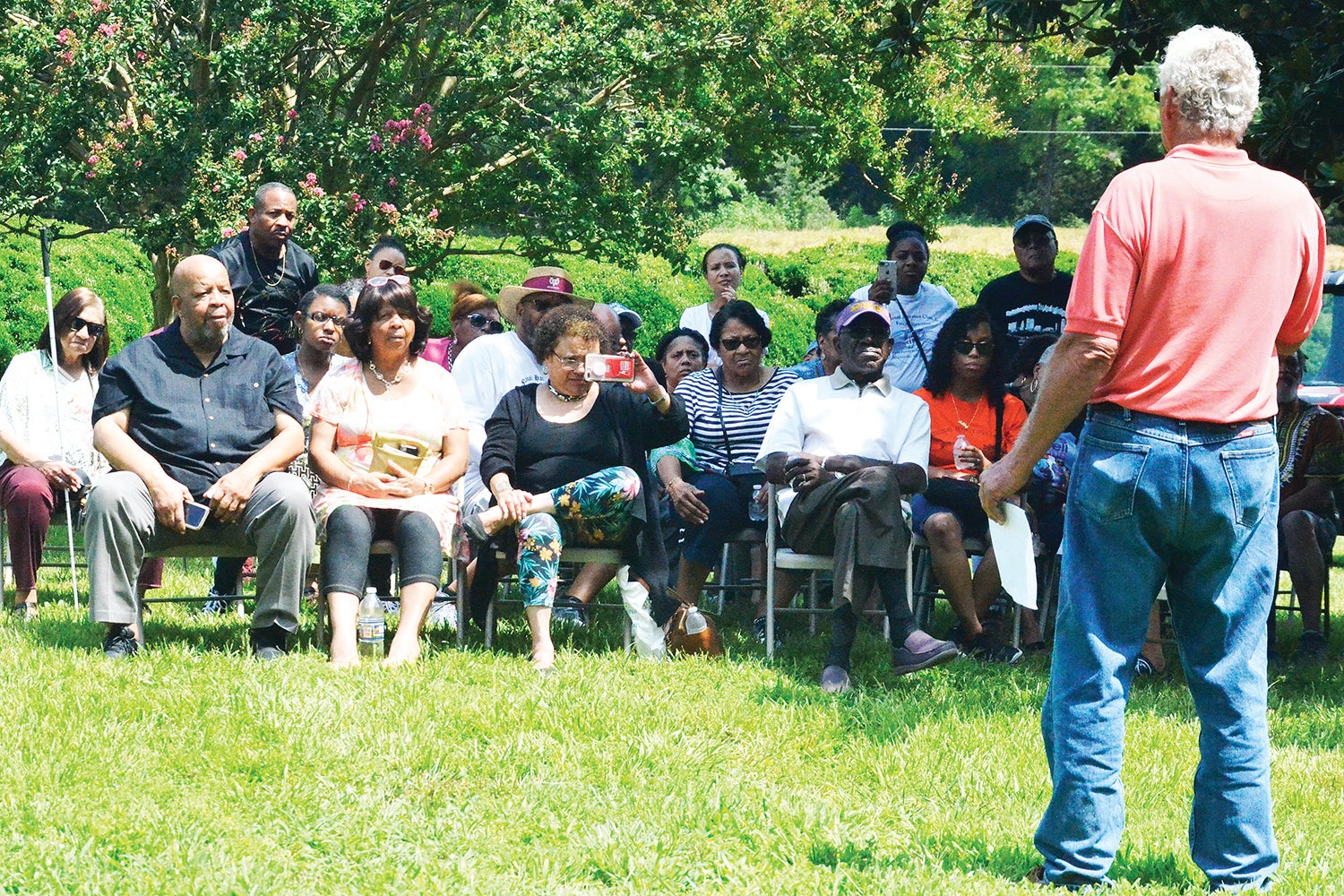Slave descendants pay homage to ancestors
Published 9:56 am Thursday, August 8, 2019

- Spurgeon Foster speaks to members of the Hairston Clan as they paid homage to their slave ancestors.
|
Getting your Trinity Audio player ready...
|
Johnnie Mae Holloway proudly walked up the front steps to the Cooleemee Plantation.
Smiling, she opened the door and walked right in.
The Lexington woman wasn’t there for a tour – but to pay homage. She is a descendant of the slaves who used to work on the plantation. On Saturday, those slave descendants were at the plantation again, part of a weekend-long reunion.
Holloway thought about her ancestors, certain they were never allowed to enter the big plantation house – especially through the front door.
She came about her family’s geneaology somewhat by chance. Her son was working on a project at the University of North Carolina at Chapel Hill, where he found records that indicated her great-great-grandparents had been born on the plantation.
That led her to becoming part of the National Hairston Clan, which holds reunions regularly all over the country. She’s thankful that Spurgeon Foster, current plantation owner, allows the descendants to visit the private property along the Yadkin River in southeastern Davie.
“I’m two years in, and I’m still discovering things,” she said. “It’s fascinating.”
She’s been to the Wilson Library, where the records are stored at the university. She discovered that some of the Hairston slaves were allowed gun permits.
“There’s so much serenity and peace out here,” she said. “That was powerful for me to walk through the front door of the plantation.”
Diana Roman, president of OurBlackAncestry.com, said the Hairstons were meticulous record keepers, and recorded every marriage, birth and death of slaves. They didn’t necessarily do it because they cared, but because it was good business to keep up with your property. Those records are being converted to digital, and should be available online in a few years, she said.
This was the 46th-year reunion of the Hairston Clan. They hope to be in Lexington or nearby for the 50th-year reunion. The clan – which boasts some 500-600 members – has had as many as 2,000 at one reunion. They meet in North Carolina about every three years.
“We can’t come here to tour,” said Robert Hairston. “We come here to pay homage, to pay tribute.”
“I think about them (ancestors) not giving up on hope,” said Avis Watkins-Smith of Cooleemee, a descendant. “Hairstons have a lot of character. It’s important we remember them. Our story is no different than other African Americans. It’s part of America’s story.”
Watkins-Smith wrote a story about her family.
“The road marker and a dirt path start you on a journey that the heart may find difficult to bear,” she said. “You are captivated by the beauty of the land. Standing is an old log cabin as a reminder that history slumbers but never sleeps. A day of deliverance for the slave and the end of an era for the slave holder.”
There were nine plantations owned by the Hairston family, including the one at Cooleemee.
“American slavery and the Hairstons are an integral part of America’s history,” she wrote. “A history that prohibited slaves to congregate, to speak their native language, and the most challenging, the separation of family. Extensive historical records bear witness to slaves seeking to reunite with kin during slavery and following emancipation. They went through great lengths to find their family.”
The Hairston Clan officially organized in August, 1931, at the Rock Hill Baptist Church in Stokes County. “However, Hairstons have always gathered; church homecomings, social events, political events. White and black Hairstons searched for their loved ones through many generations.”
Those ancestors, last Saturday, “… stepped on the same red clay soil where their ancestors stood as enslaved people. May they transcend time and once again hear the words of the preacher. All streams flow into the sea, yet the sea is not full, from the place where the streams come from, there they return again. Streams of mercy, streams of freedom, from the Nile to the Yadkin, the river just keeps on flowing. It is where love begins and where love ends.”
Those ancestors got to see the plantation house, built in the mid-1850s and being restored by Bob Pearl and Ann Hall Wauford of Robert Pearl Restoration. They’ve procured 1840s glass to replace windows, added paint, and hope to get to outbuildings in the project she said would take two to three years.
Foster gave the group a brief history of the plantation, saying that three slaves were sent to the site in 1814 to see if cotton and tobacco could grow there. It did, and the Hairstons initially bought 2,500 acres. It had grown to 4,500 acres by 1860.
The tobacco and cotton were hauled to Wilmington by ox and cart, mostly over plank roads. The Hairstons’ plan to make the Yadkin River navigable never materialized.
He said that approximately 300 slaves lived on the plantation at one time, scattered about in some 70 cabins.
Returning the property to a working farm, Foster said he found an area along the Yadkin River that puzzled him, with levees and other water manipulation devices. His son, who had done mission work in Africa, said it was a rice paddy. “They brought that knowledge here from Africa,” Foster said.
The plantation house the ancestors paid homage to was mostly built by those slaves, making their own bricks and cutting the granite with hand tools. The house is structurally sound, he said.
“The history of the Hairstons is richer than the red clay soil,” Watkins-Smith wrote.



